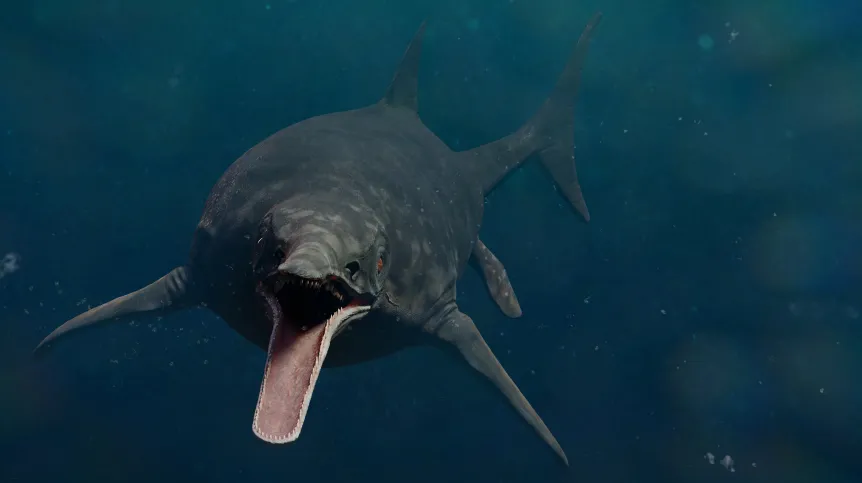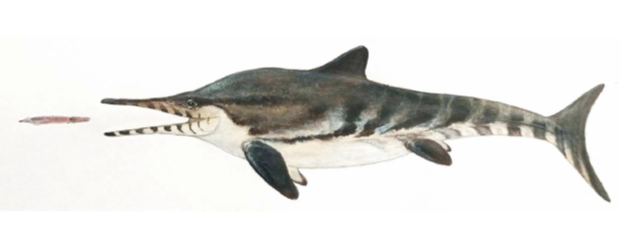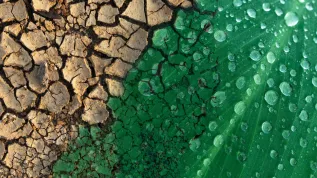
A 180-million-year-old ichthyosaur specimen, long thought to be a plaster cast, has been confirmed as a genuine fossil by palaeontologists from the Jagiellonian University in Kraków.
The marine reptile, belonging to the species Stenopterygius quadriscissus, had been part of the university’s collection for more than a century.
The discovery was made after two slabs of Jurassic fossils were added to the exhibition at the Jagiellonian University’s Nature Education Centre last year.
One slab, containing what appeared to be an ichthyosaur model, was purchased for the university between 1849 and 1851 from the Bad Boll area near the Holzmaden fossil site in Germany.
“For many years, it was thought to be a plaster cast,” said Bartłomiej Kajdas, PhD, curator of the geological collection at the Nature Education Centre. “It turned out to be a nearly complete skeleton, covered with several layers of black paint.” Preparators cleaned the specimen, and palaeontologists have now described it in a paper published in Geological Quarterly.

According to Łukasz Weryński, the study’s lead author and a doctoral student at the Institute of Geological Sciences of the Jagiellonian University, ichthyosaurs were “among the most famous Mesozoic marine reptiles, with their origins dating back to the very Early Triassic.”
He said: “They adapted to a marine lifestyle very quickly. In the phylogenetic tree, they likely lie close to the archosauromorph trunk, meaning a branch closer to dinosaurs, birds, pterosaurs, and crocodiles than to the ‘lizard-like’ branch – lepidosaurs.”
The team determined that the Kraków specimen was Stenopterygius quadriscissus, not Ichthyosaurus communis, as originally identified. “The skeleton came from the Posidonia shales, which are rich in perfectly preserved fossils. There are several fragmentary fossils of these ichthyosaurs in Poland, but our specimen is the most complete one,” Weryński said.
The fossil represents an individual about 2.5 metres long — roughly the size of a modern dolphin. “The species Stenopterygius quadriscissus is one of the best-known ichthyosaurs. Thanks to research on such fossils, we know that ichthyosaurs were covered with skin similar to dolphins, and likely had a layer of subcutaneous fat like dolphins. They were also viviparous, like mammals,” Weryński added.
Asked why the fossil was painted, Weryński offered two possible explanations. “One is for aesthetic reasons, because at the time it was first painted, in the early 20th century, there was a trend in the United States to paint fossils with black paint; perhaps someone was inspired by this,” he said. “The second reason was probably the desire to preserve the specimen, albeit in a haphazard and unprofessional manner.” Additional paint layers were likely added in the 1970s.
The slab also contains fossils of belemnites — extinct cephalopods resembling modern squid. “We think they may be the remains of this individual’s last meal, as these ichthyosaurs fed on them. However, it is also possible that the belemnites ended up there by accident,” Weryński said.
PAP - Science in Poland
akp/ agt/ kap/
tr. RL













